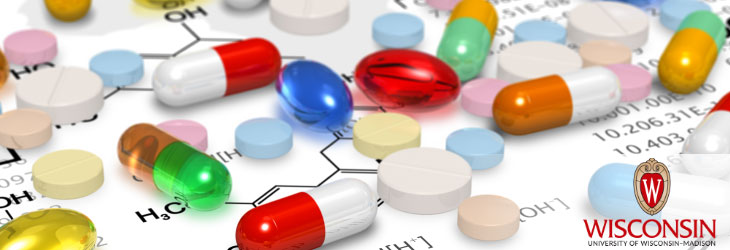Therapeutics & Vaccines

Enzyme Aids Intranasal Drug Delivery
WARF: P120322US02
Inventors: Robert Thorne, Jeffrey Lochhead
The Wisconsin Alumni Research Foundation (WARF) is seeking commercial partners interested in developing nasal spray containing matrix metalloproteinase-9, which helps drugs get absorbed into the brain and blood.
Overview
Currently, delivering drugs directly into the brain requires invasive surgery. This is because a tight cellular layer called the blood-brain barrier (BBB) not only prevents harmful substances from entering the brain, but also blocks many therapeutic agents.
Major research is now focused on bypassing the BBB and delivering drugs intranasally. While many factors influence how drugs are absorbed via the nose, it is known that certain substances can make the nasal lining, or epithelium, more permeable. Such ‘absorption/permeability enhancers’ include bile salts and other chemicals. However, none of these are used in conjunction with nasal peptide or protein drugs (e.g., calcitonin, desmopressin and oxytocin) because they can be toxic and cause irreversible damage to epithelial cells.
Major research is now focused on bypassing the BBB and delivering drugs intranasally. While many factors influence how drugs are absorbed via the nose, it is known that certain substances can make the nasal lining, or epithelium, more permeable. Such ‘absorption/permeability enhancers’ include bile salts and other chemicals. However, none of these are used in conjunction with nasal peptide or protein drugs (e.g., calcitonin, desmopressin and oxytocin) because they can be toxic and cause irreversible damage to epithelial cells.
The Invention
UW–Madison researchers have developed a method to enhance intranasal drug absorption using a naturally occurring endopeptidase, called matrix metalloproteinase-9 (MMP-9). This enzyme makes the nasal epithelium more permeable to drugs by degrading type IV collagen. Nasal spray or drops containing MMP-9 can be administered at the same time or prior to a drug to improve its absorption.
Applications
- Drug delivery
- Use with biopharmaceuticals such as peptides, proteins, oligonucleotides, vectors for gene therapy and stem cells
Key Benefits
- Higher concentrations of drugs can be delivered into the brain and blood.
- Bypasses the blood-brain barrier
- MMP-9 is a natural enzyme and may be better tolerated.
Stage of Development
The development of this technology was supported by WARF Accelerator. WARF Accelerator selects WARF's most commercially promising technologies and provides expert assistance and funding to enable achievement of commercially significant milestones. WARF believes that these technologies are especially attractive opportunities for licensing.
Additional Information
Related Intellectual Property
Publications
- Lochhead J.J. and Thorne R.G. 2012. Intranasal Delivery of Biologics to the Central Nervous System. Adv. Drug Deliver. Rev. 64, 614-628.
Tech Fields
For current licensing status, please contact Andy DeTienne at [javascript protected email address] or 608-960-9857